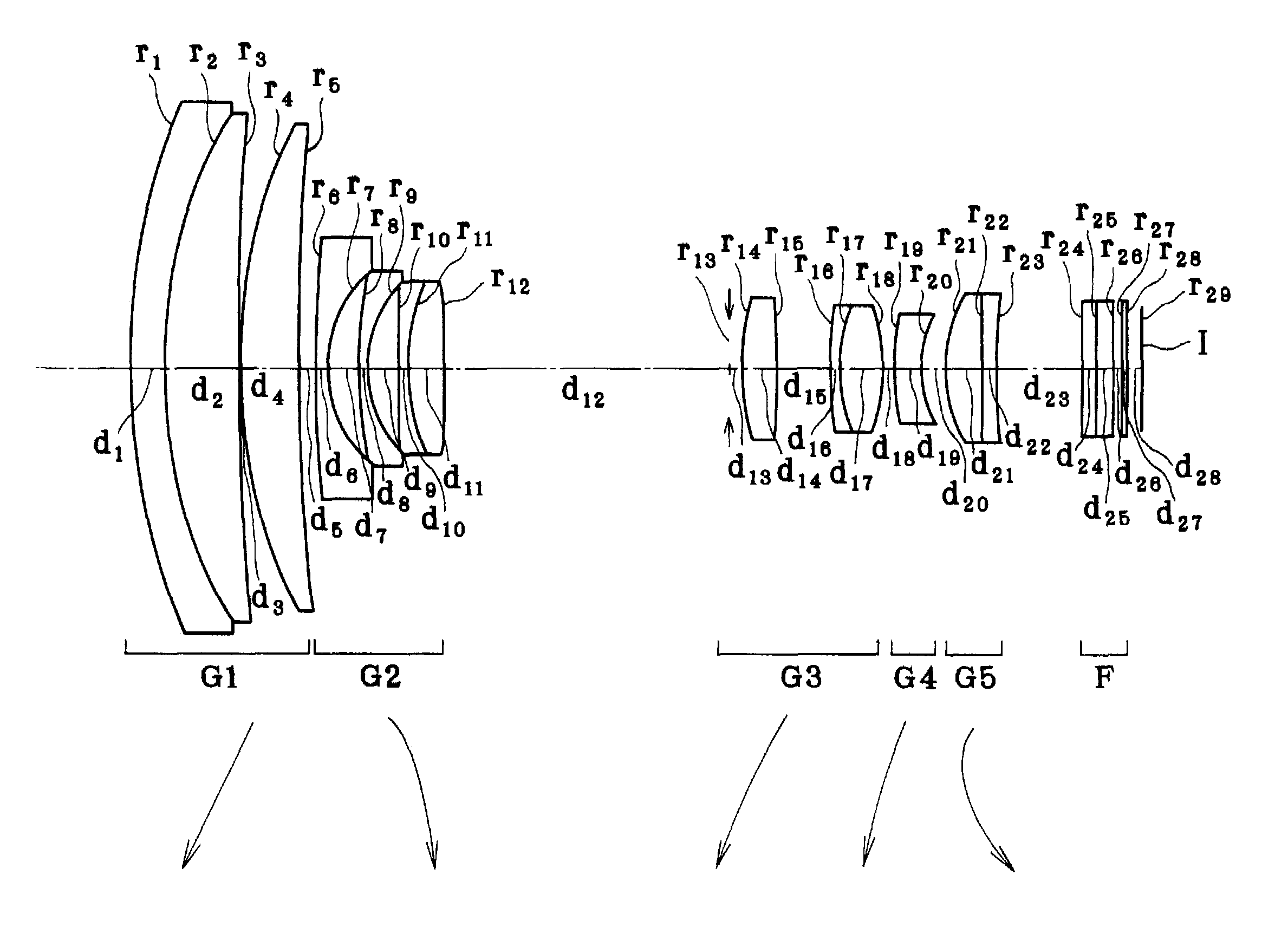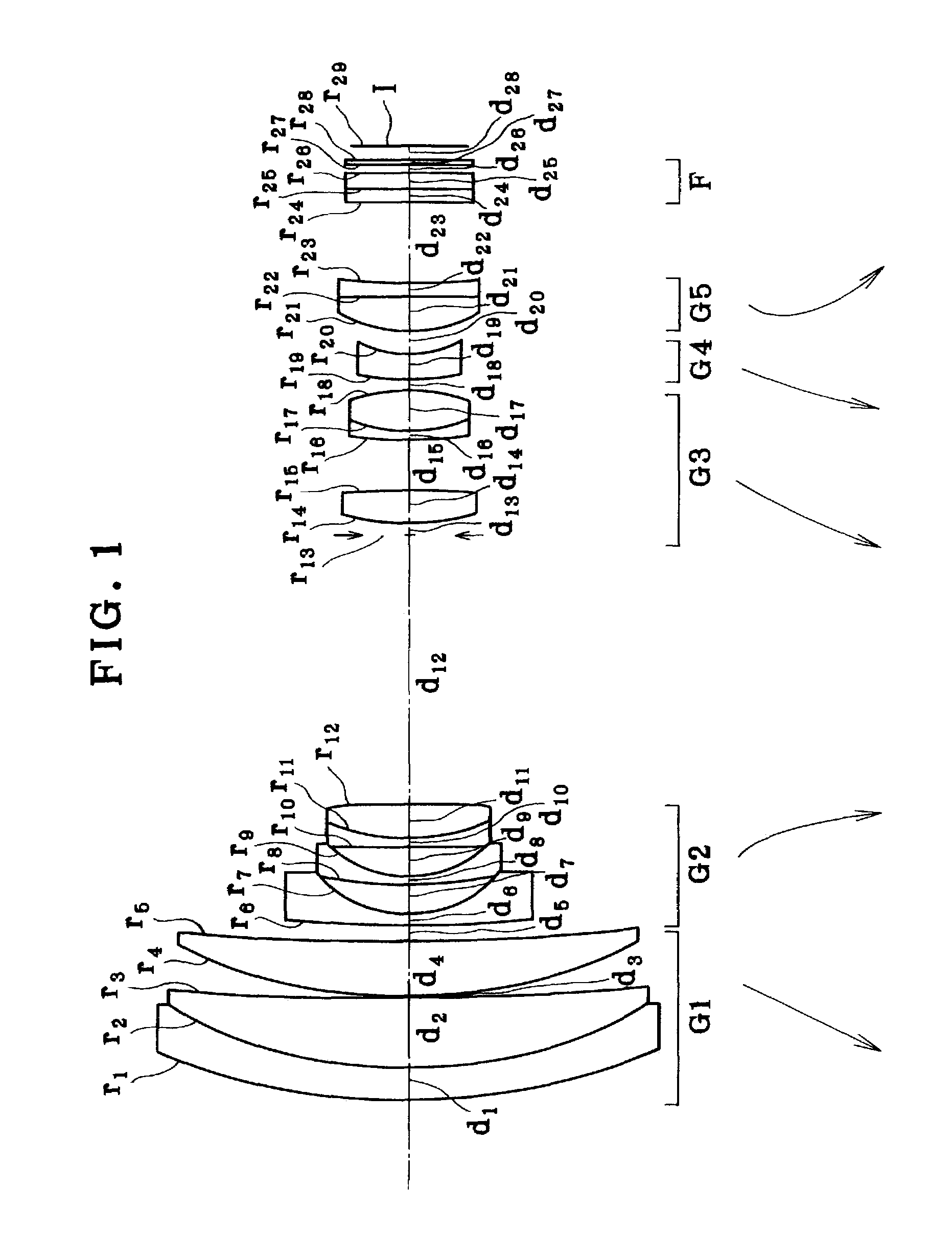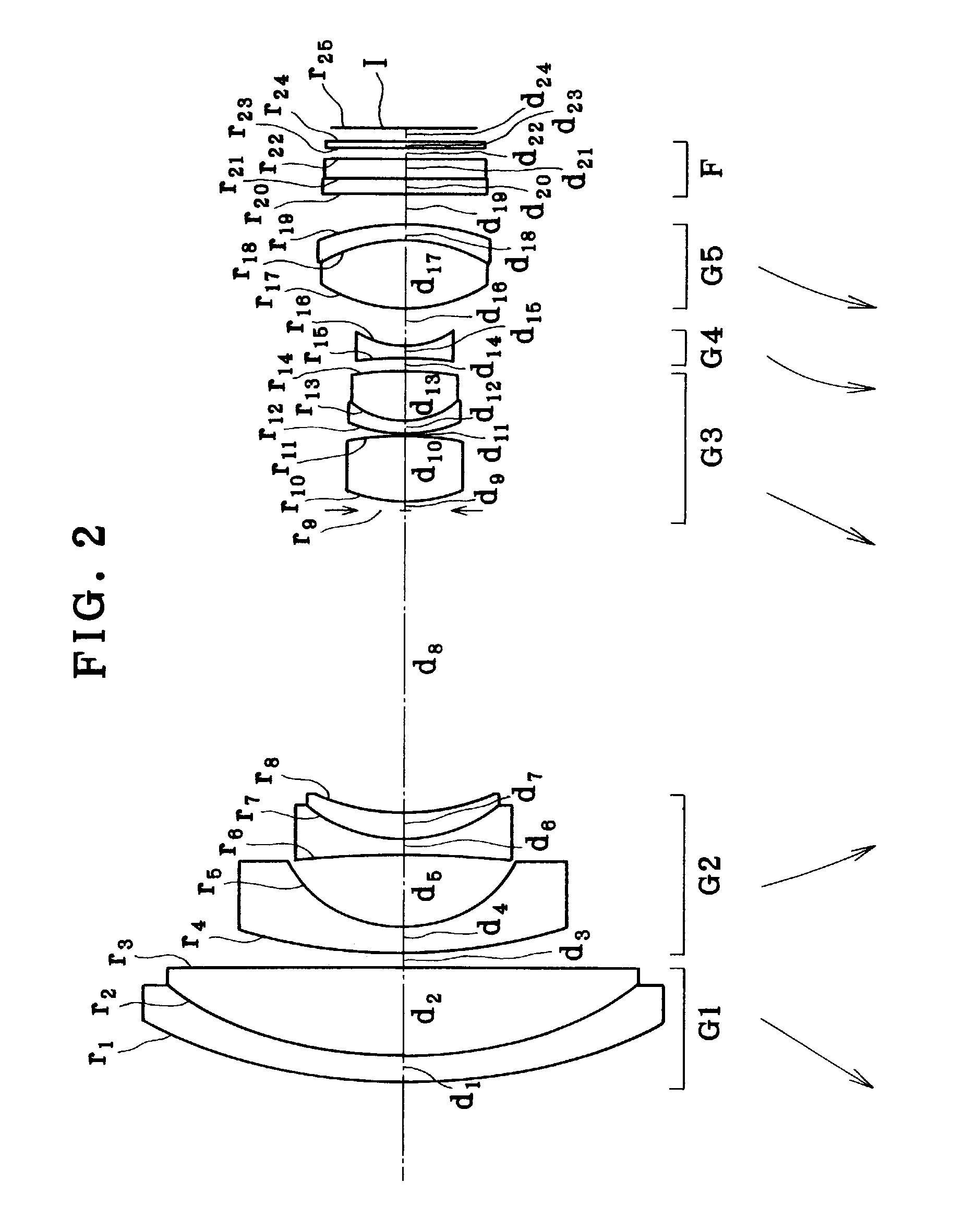Wide-angle, high-zoom-ratio zoom lens
- Summary
- Abstract
- Description
- Claims
- Application Information
AI Technical Summary
Benefits of technology
Problems solved by technology
Method used
Image
Examples
example 1
[0155]The zoom lens of this example is made up of a first lens group G1 having positive refracting power, a second lens group G2 having negative refracting power, a third lens group G3 having positive refracting power, a fourth lens group G4 having negative refracting power and a fifth lens group G5 having positive refracting power, as shown in FIG. 1. Upon zooming from the wide-angle end to the telephoto end of the zoom lens while focused on an object point at infinity, the first lens group G1 moves toward the object side of the zoom lens and upon arriving at the telephoto end it is positioned nearer to the object side than at the wide-angle end, the second lens group G2 moves toward the image plane side of the zoom lens and upon arriving at the telephoto end it is located at much the same position as in the intermediate setting, the third lens group G3 moves toward the object side, the fourth lens group G4 moves toward the object side while the spacing between it and the third len...
example 2
[0157]The zoom lens of this example is made up of a first lens group G1 having positive refracting power, a second lens group G2 having negative refracting power, a third lens group G3 having positive refracting power, a fourth lens group G4 having negative refracting power and a fifth lens group G5 having positive refracting power, as shown in FIG. 2. Upon zooming from the wide-angle end to the telephoto end of the zoom lens while focused on an object point at infinity, the first lens group G1 moves toward the object side of the zoom lens and upon arriving at the telephoto end it is positioned nearer to the object side than at the wide-angle end, the second lens group G2 moves toward the image plane side of the zoom lens, the third lens group G3 moves toward the object side, the fourth lens group G4 once moves toward the object side and then moves somewhat toward the image plane side while the spacing between it and the third lens group G3 becomes wide, and the fifth lens group G5 ...
example 3
[0159]The zoom lens of this example is made up of a first lens group G1 having positive refracting power, a second lens group G2 having negative refracting power, a third lens group G3 having positive refracting power, a fourth lens group G4 having negative refracting power and a fifth lens group G5 having positive refracting power, as shown in FIG. 3. Upon zooming from the wide-angle end to the telephoto end of the zoom lens while focused on an object point at infinity, the first lens group G1 once moves toward the image plane side of the zoom lens and then moves toward the object side of the zoom lens and upon arriving at the telephoto end it is positioned nearer to the object side than at the wide-angle end, the second lens group G2 moves toward the image plane side, the third lens group G3 moves toward the object side, the fourth lens group G4 moves toward the object side while the spacing between it and the third lens group G3 becomes wide, and the fifth lens group G5 moves tow...
PUM
 Login to View More
Login to View More Abstract
Description
Claims
Application Information
 Login to View More
Login to View More - R&D
- Intellectual Property
- Life Sciences
- Materials
- Tech Scout
- Unparalleled Data Quality
- Higher Quality Content
- 60% Fewer Hallucinations
Browse by: Latest US Patents, China's latest patents, Technical Efficacy Thesaurus, Application Domain, Technology Topic, Popular Technical Reports.
© 2025 PatSnap. All rights reserved.Legal|Privacy policy|Modern Slavery Act Transparency Statement|Sitemap|About US| Contact US: help@patsnap.com



